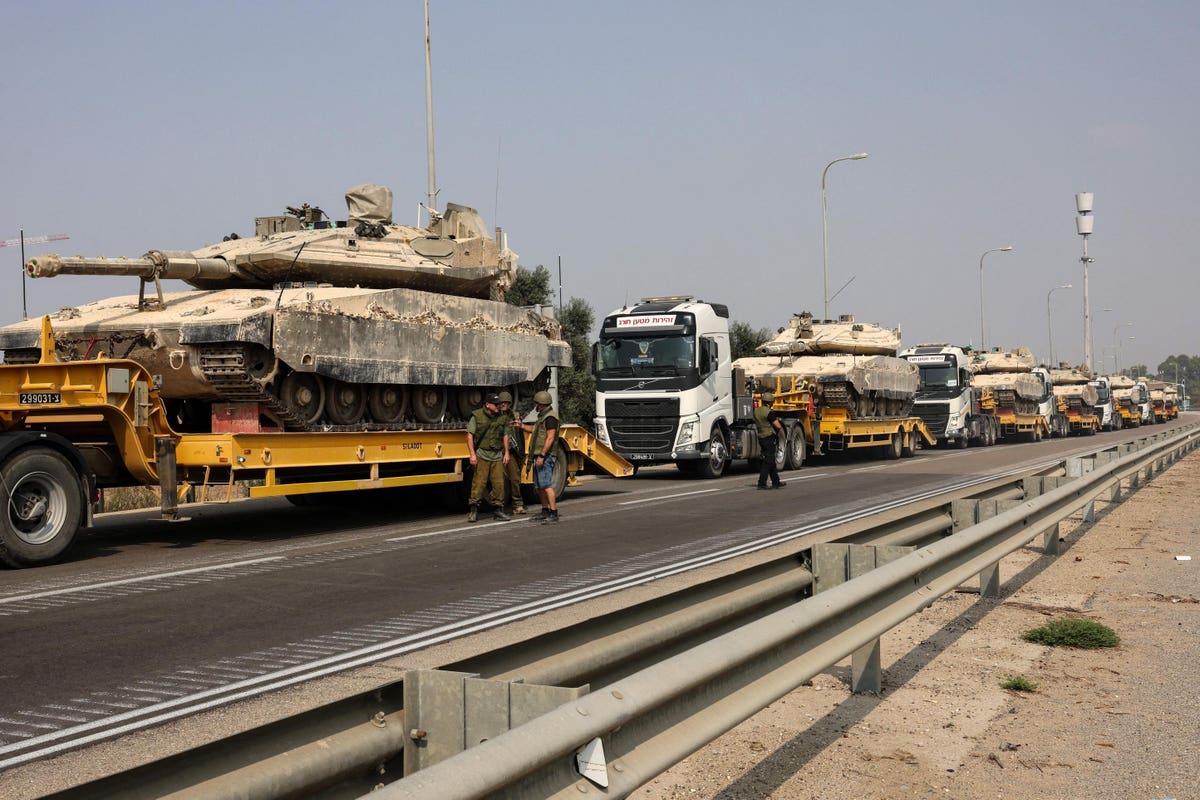Following Saturday’s unprecedented Hamas-led attack and infiltration of Israel, Israel’s leadership has vowed a crushing and long-lasting defeat of its adversaries in the Gaza Strip. Fulfilling that objective could involve the country’s largest ground operation in over 40 years.
Saturday’s surprise attack, in which hundreds of Palestinian militants infiltrated several populated areas inside Israel’s pre-1967 borders, has left, as of writing, no fewer than 600 Israelis dead and at least 2,048 injured. Israeli strikes on Gaza have left at least 313 Palestinians dead and wounded approximately 2,000. Israeli officials vow that their upcoming campaign against Hamas and other Palestinian factions will go much farther than the recurring operations against militants in the strip beginning in late 2008.
“We will change reality on the ground in Gaza for the next 50 years,” Israeli Defense Minister Yoav Gallant declared. “What was before, will be no more. We will operate at full force.”
Prime Minister Benjamin Netanyahu also vowed Israel would “take revenge for this black day” by using all its strength to destroy Hamas’ capabilities. However, he also cautioned that: “This war will take time. It will be difficult.”
Both statements indicate that the Israeli leadership is preparing the public for a major operation that will not rely on air and artillery bombardments alone but possibly a significant ground operation. Israel last launched a ground offensive into Gaza during the summer 2014 war. But even that operation had the limited objective of destroying Hamas tunnels, not eliminating the group outright.
This time will be different. One may even have to go back as far as 1982 for a comparable precedent.
In June 1982, Israel invaded South Lebanon with the stated goal of pushing Palestine Liberation Organization (PLO) fighters away from the border to prevent them from shelling northern Israeli towns. While Operation Peace for Galilee had the original objective of pushing the PLO 40 miles north of the Israeli frontier, instead, the Israeli Army advanced right to Beirut and besieged it, which took a terrible toll on Lebanese civilians.
The operation ostensibly achieved its goal of expelling the PLO, with the group’s leadership relocating to Tunisia. However, the conflict led to the rapid rise of the more powerful Hezbollah, which utilized deadly suicide bombing attacks against Israeli troops. Israel withdrew from much of Lebanon to a security zone in the south in 1985. In 2000, the last troops left the security zone, although Israel retained its hold over a small strip of borderland known as the Shebaa Farms.
Aside from Peace for Galilee, the only major ground offensive the Israeli Army has undertaken since 1982 was the much shorter-lived 2002 Operation Defensive Shield in the West Bank during the Second Intifada. For the most part, the Israeli military has used artillery, airstrikes, and raids by small infantry units and special forces to neutralize its opponents.
Peace for Galilee was a follow-up to 1978’s one-week Operation Litani, an offensive Israel launched into South Lebanon after Palestinian militants infiltrated deep into Israel and killed 38 Israeli civilians on a highway near Tel Aviv. Defensive Shield followed a Passover massacre in the Israeli coastal city of Netanya that killed 30.
As already noted, Saturday’s attack left an order of magnitude more Israeli civilians dead — about ten times the number of those two attacks combined, according to preliminary figures — and was a far greater breach of the country’s security. It has also seen dozens of Israelis kidnapped from inside the pre-1967 borders and brought back to Gaza. Freeing these hostages will undoubtedly prove highly challenging, even for Israel’s most elite special forces units.
An extensive ground offensive into Gaza will likely involve deadly urban warfare against entrenched opponents willing to die in battle and use those captured Israeli civilians and soldiers as human shields.
Then there is the Hezbollah factor. The Iran-backed Shiite militia group fired mortars into the Israeli-controlled Shebaa Farms on Sunday. The attack and Israel’s swift response, firing artillery over the border, both seemed calibrated to prevent any escalation, at least for now.
Hezbollah could feel compelled to open a northern front if Israel pushes deep into Gaza or fully reoccupies the territory. Another full-fledged war between Israel and Hezbollah would most likely prove even more deadly than the present war with Hamas and much more deadly than the last round in 2006.
Nicholas Blanford, a Hezbollah expert, has repeatedly predicted the catastrophic outcome of a Third Lebanon War in recent years, summing it up as follows: “Israel’s domestic front will experience its greatest destruction and loss of life since the 1948 war. Lebanon will be turned into a car park.”
While Israel has already suffered the greatest loss of life on its home front in Hamas’ attack on Saturday since its inception, it could suffer even greater losses in another war against Hezbollah given that group’s far more enormous stockpile of longer-range missiles, many of which are precision-guided.
The prospect of peace and stability seems as distant as ever in the Middle East.
Read the full article here





